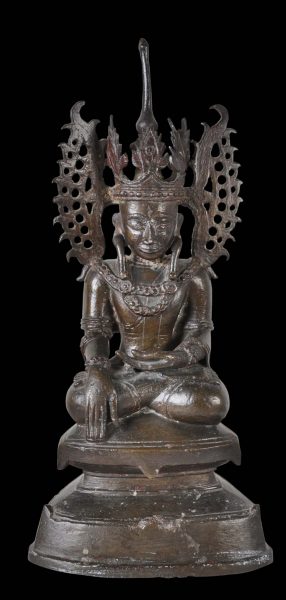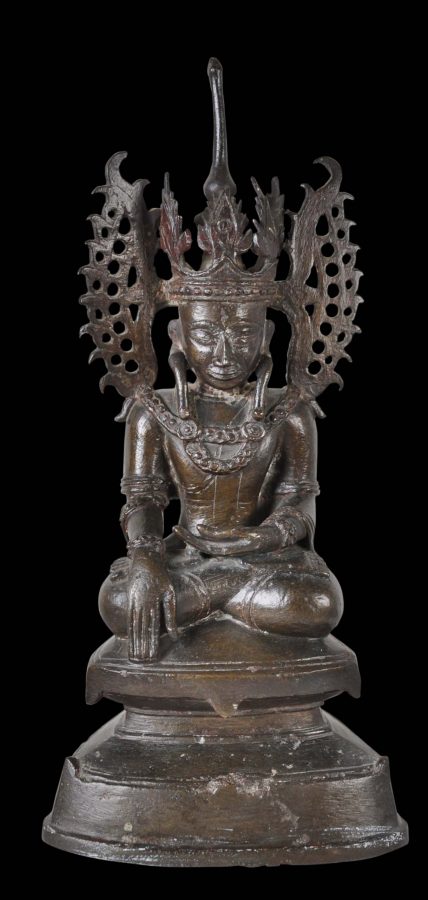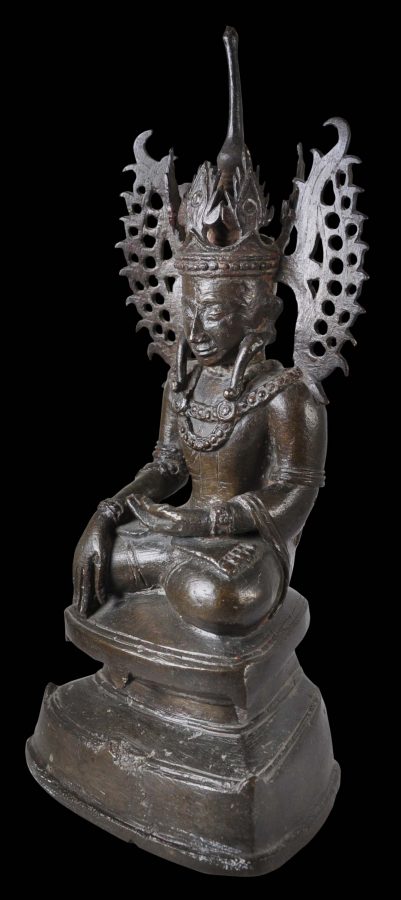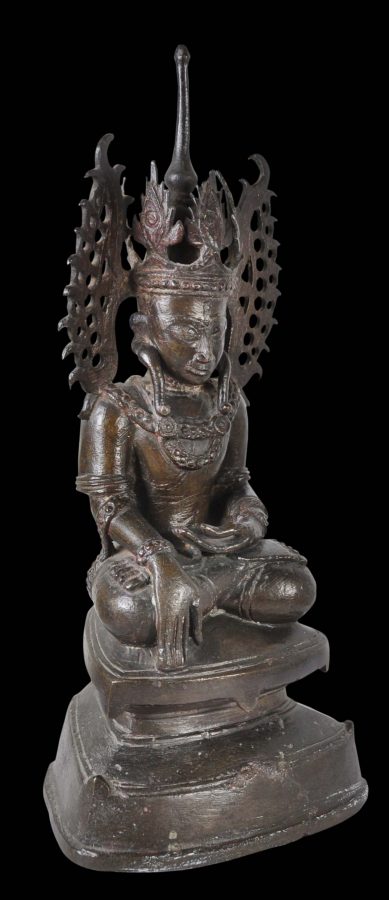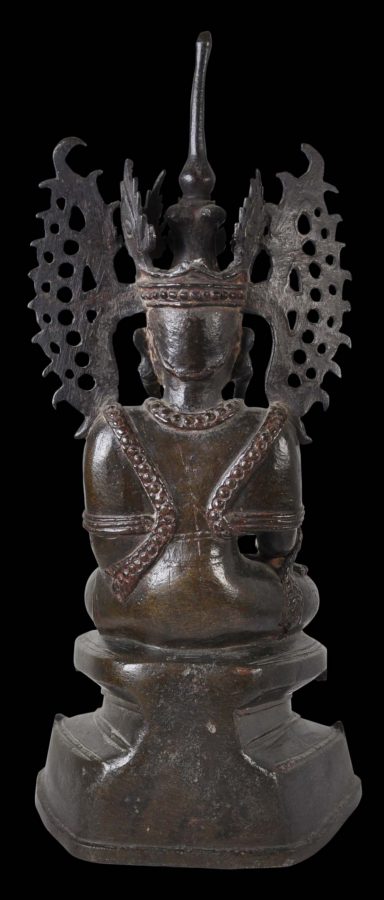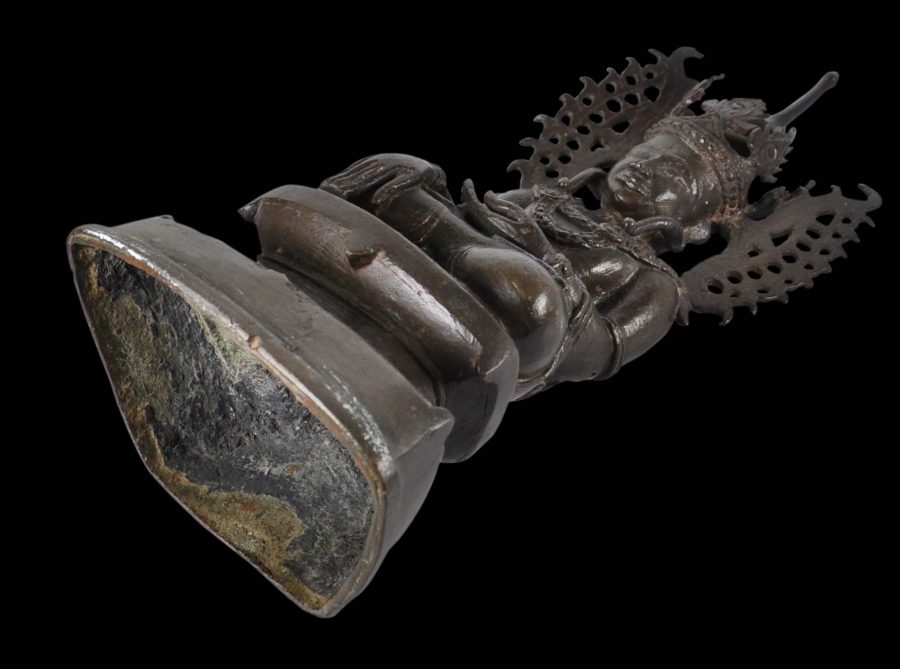This Ava-style Jambupati Buddha has been cast using the lost-wax process as a single piece. The distinctive leaf-like, winged crown flies out from each side of the crown, the ‘wings’ being supported by each shoulder. These elements are a distinctive Burmese development and most probably are based on the Indian headdress ribbons that are cast onto Indian Hindu bronze images. The crown also has a tall central spire (jata).
The figure shows the Buddha seated cross-legged in bhumiparsimudra. In addition to the crown, the Buddha wears a thick necklace-like trimmings across the shoulders and down the back, ear plugs with thick tassels which fall from the lobes to the upper chest, and thick jewelled bracelets. These elements are suggestive of nobility hence the term Jambupati-style.
The Buddha sits in meditation with his left hand, palm upright, resting on his lap, and his right hand touching the earth. This represents the moment of the Buddha’s enlightenment. The moment recalls the incident when the demon king Mara sought to attack the historical Buddha with him demon army while the Buddha was meditating under the bodhi tree. But the Buddha refused to move. The demon king attempted to claim the seat of enlightenment for himself, claiming that his spiritual achievements were greater than the Buddhas. Mara’s soldiers cried out together, ‘I am his witness!’ Mara challenged the Buddha to say who would speak for him? The Buddha reached out his right hand to touch the earth, and declared that the earth itself would be his witness. Mara disappeared and the Buddha reached enlightenment.
The Buddha is shown on a high, hour-glass plinth or platform with a flared base. The base also is peculiarly Burmese.
A related image is illustrated in Fraser-Lu & Stadtner (2015, p. 154).
The image here has a good, dark, chocolate-brown patina. An element of the crown at the back is now missing and the tip of one of the crown’s elements at the front is also deficient. These are more a function of age and are somewhat minor. Overall, this is a fine example.
References
Fraser-Lu, S., & D.M. Stadtner, Buddhist Art of Myanmar, Asia Society Museum, 2015.
Karow, O., Burmese Buddhist Sculpture: The Johan Moger Collection, White Lotus, 1991.
Lowry, J., Burmese Art, Victoria and Albert Museum, 1974.
Proser, A., (ed.), Pilgrimage and Buddhist Art, Asia Society Museum/Yale University Press, 2010.


